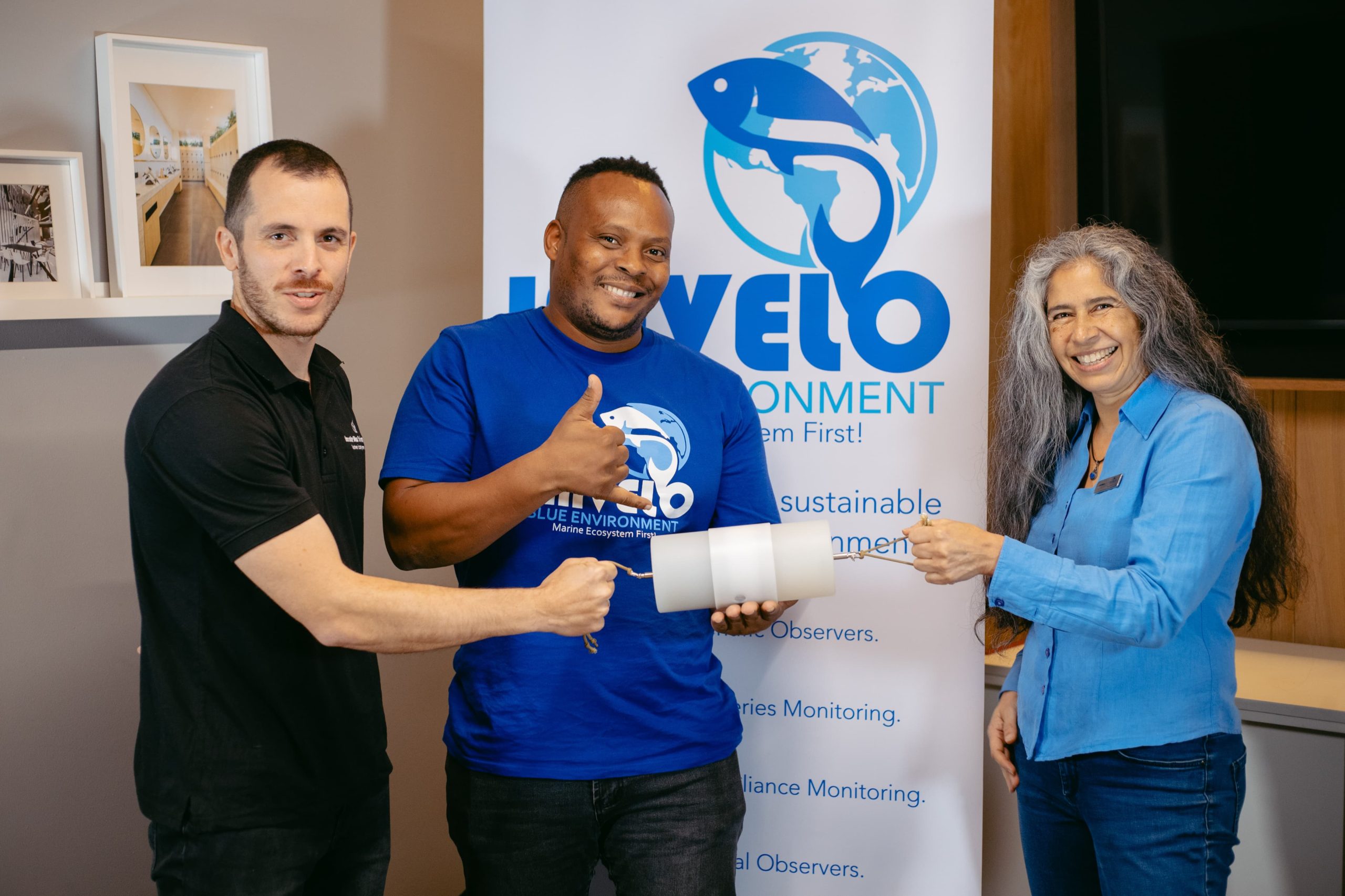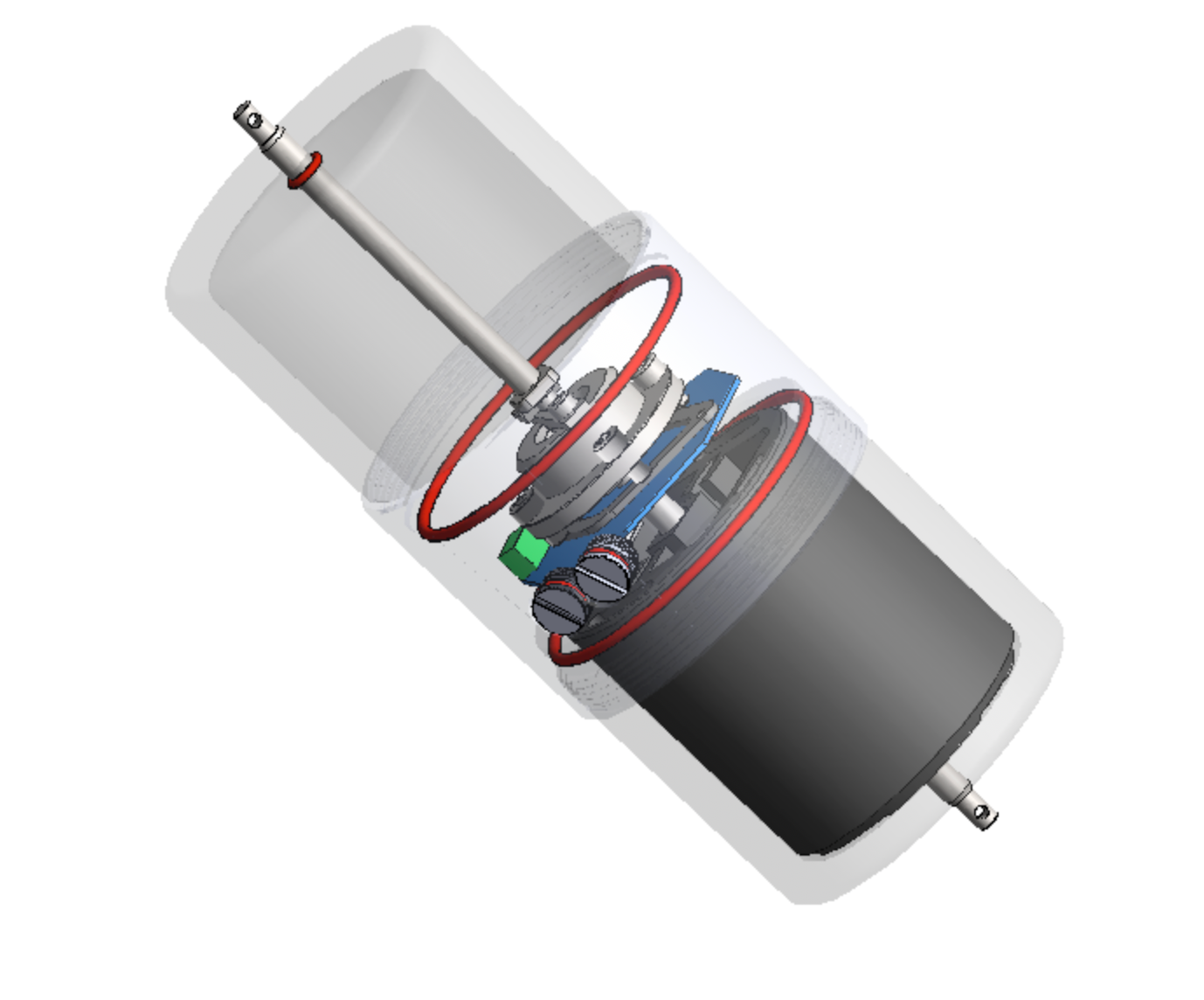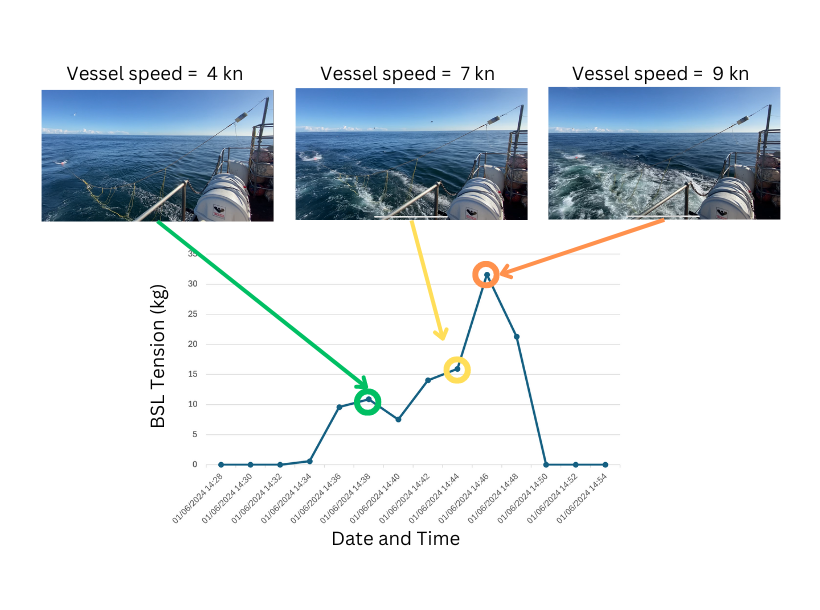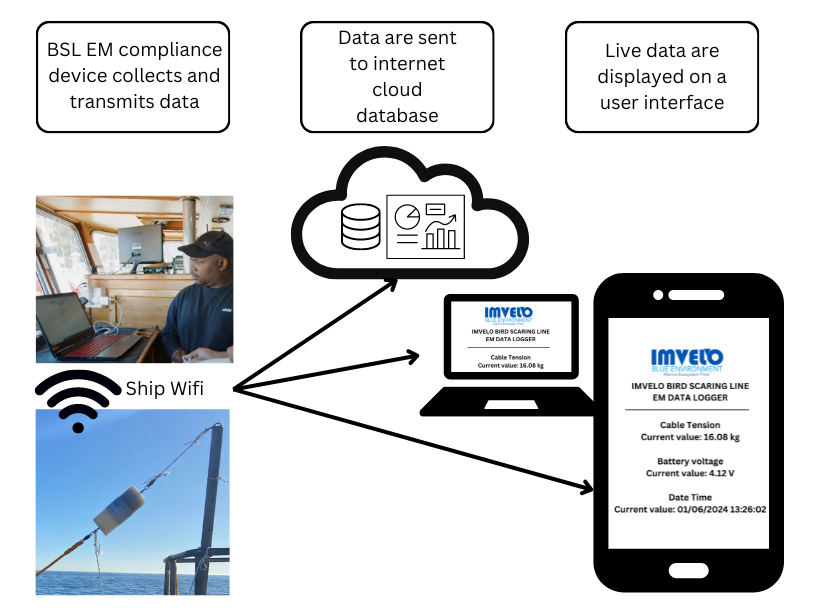Imvelo Bird Scaring Line (BSL) Electronic Monitoring Device:
Ensuring everyone tows the line!





Mr Sihle Victor Ngcongo, the founder of Imvelo Blue Environment, has created a device called Imvelo BSL device, which monitors the compliance of the two out of three international best practice measures for the prevention of seabird entanglement and mortalities on longline vessels and trawlers. This electronic monitoring device is attached to the BSL on a fishing vessels and continuously collects tension over time data during the fishing voyage.
For many years the use of BSLs and night setting have been part of the recommended best practices for the protection of seabirds. While the BSLs can be onboard and available during port inspection, this does not guarantee BSLs are actually being deployed when there are no observers on board during the fishing voyage. In recent years, there has also been an increasing number of reports from other sea users, indicating that some vessels are not deploying BSLs. The Imvelo BSL device can eliminate doubts on whether the BSLs are indeed deployed at sea in acccordance with best practices.
Dr Nelson Miranda of Argonaut Science, has assisted Mr Ngcongo with the technical development and independent scientific validation of the device. The Imvelo BSL device is a tool to ensure that fishing companies, who are committed to the conservation of marine ecosystems, are able to determine whether the BSLs are actually being deployed on their fishing vessels in compliance with the best international practices.
With many years of experience as a fisheries observer, Mr Ngcongo understands the challenges faced by other scientific observers in collecting compliance data. The data collected by the device can be measured against official fishing logbook data and pinpoint sets where the BSL was deployed or not. This will also release some pressure off the observers and allow them to focus on other tasks while relying on the device to ensure that the vessel is compliant.
BirdLife South Africa has portrayed a strong supporting role through its Albatross Task Force (ATF) experts from the Cape Town Office. We have also received strong support from South African Fisheries Department scientists. Fishing industry players and some agents of fishing regulatory bodies agree that the development of this device is a game-changer in both domestic and international fisheries compliance monitoring.
Since 2019 there has been constant testing of the device, and results shows that it can be a reliable compliance tool to confirm compliance. The final market-ready version of the device released in the first half of 2024 was tested at sea in collaboration with the ATF team. The device is capable of transmitting data wirelessly, which is useful to address safety and entanglement concerns, as the BSLs are deployed at the edge of the vessel stern, and on the longline fleet at night without proper lighting. The latest version of the device provides an option for it to connect to vessel Wi-Fi, allowing more Internet of Things (IoT) options that include remote near-real-time monitoring, as well as data and reports to be stored in the cloud for clients to access.
